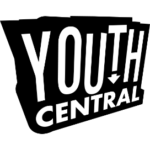When we think of the Aztecs, images of grand temples, feathered warriors, and gold artifacts usually come to mind. But beyond the myths and drama of conquest, the Aztecs were remarkably advanced engineers and innovators. In fact, some of their technologies and ideas continue to influence our daily lives today—often in ways we don’t even realize.
After spending hours digging through academic articles, anthropology journals, and archaeological reports, I was honestly blown away by how many traces of Aztec ingenuity still exist. Here’s a deep dive into some of the technologies the Aztecs used that remain part of modern life.
1. Chinampas: The Floating Gardens That Inspired Modern Farming
The Aztecs built artificial islands called chinampas in the shallow lakes around Tenochtitlán (modern-day Mexico City). These were essentially raised beds of earth constructed on lake beds, separated by canals. They allowed for year-round agriculture and were highly productive—some estimates suggest they could yield up to seven harvests a year.
Today, we see similar ideas in hydroponics and aquaponics. Urban farming initiatives often reference chinampas as early examples of sustainable, space-efficient agriculture. In places like Xochimilco, parts of the original chinampas still function and produce crops. Modern environmentalists and agricultural engineers study these ancient systems to combat food insecurity in densely populated urban areas.
2. Causeways and Canals: The Precursor to City Infrastructure
Tenochtitlán was a city built on a lake, connected to the mainland by long, straight causeways. These weren’t just roads—they included sluice gates, drawbridges, and aqueducts for clean water. The Aztecs combined engineering with natural resources to make a city that was both accessible and defensible.
In modern civil engineering, the concept of using elevated roads, water-based transportation, and planned grids for cities owes a lot to systems like the ones the Aztecs designed. Their use of causeways is a great example of how human-made and natural environments can work together rather than against each other.
3. Herbal Medicine and Natural Remedies
Aztec healers, known as ticitl, had an extensive knowledge of medicinal plants. They used hundreds of herbs for treating everything from stomachaches to wounds and even mental health issues. Some of their treatments included aloe vera, chili peppers, and cacao—all of which are still used in traditional and even mainstream medicine today.
Modern pharmacology has started to take a deeper interest in these ancient remedies. Scientists are analyzing Aztec texts and comparing them with clinical research, discovering that a surprising number of their treatments had real medicinal value. What’s even more fascinating is that many of these plants are now grown worldwide for health and wellness products.
4. Universal Education
The Aztecs believed that every child—regardless of gender or class—deserved an education. Schools were widespread, and both boys and girls were taught practical skills, religion, history, and arts. While the content was tailored based on social class (nobles learned more advanced topics), the idea that everyone should learn was revolutionary for its time.
This early model of universal education parallels many of the values we hold today. Public education systems across the globe share the Aztec ideal that knowledge shouldn’t be exclusive. It’s incredible to think that centuries ago, a society had already committed to making education a cornerstone of citizenship.
5. Pictographic Writing and Record-Keeping
While the Aztecs didn’t have a phonetic alphabet like the Romans or Greeks, their pictographic writing system was detailed and sophisticated. Codices were used to record history, laws, religious rituals, and trade agreements.
Today, infographics and visual data representation are everywhere—from social media to business reports. Some educational theorists argue that our brains are wired to interpret and remember visual symbols more effectively. The Aztecs seemed to know this centuries before we made it a design trend.
6. Calendars and Timekeeping
The Aztecs used two primary calendars: the tonalpohualli, a 260-day ritual calendar, and the xiuhpohualli, a 365-day solar calendar. These systems were used for everything from religious ceremonies to agricultural planning. Their understanding of astronomy and time was incredibly advanced for the pre-modern world.
While we no longer follow the Aztec calendar, their sophisticated timekeeping methods contributed to the broader Mesoamerican astronomical legacy. Today’s calendars and astronomical tools still rely on principles rooted in ancient civilizations, including the Aztecs.
Final Thoughts
It’s easy to dismiss the past as primitive, but the more we learn about the Aztecs, the clearer it becomes that they were visionaries in science, engineering, and society. Their innovations were not only impressive for their time—they laid the groundwork for techniques and systems we still rely on.
Spending time researching this has made me appreciate how human knowledge isn’t a straight line forward, but a web that connects us across generations. The Aztecs were problem-solvers, creators, and thinkers. And in many ways, they were centuries ahead of their time.
Next time you walk past a community garden or scroll through a visual chart on your phone, take a moment to think of the people who made that possible long before us.


































